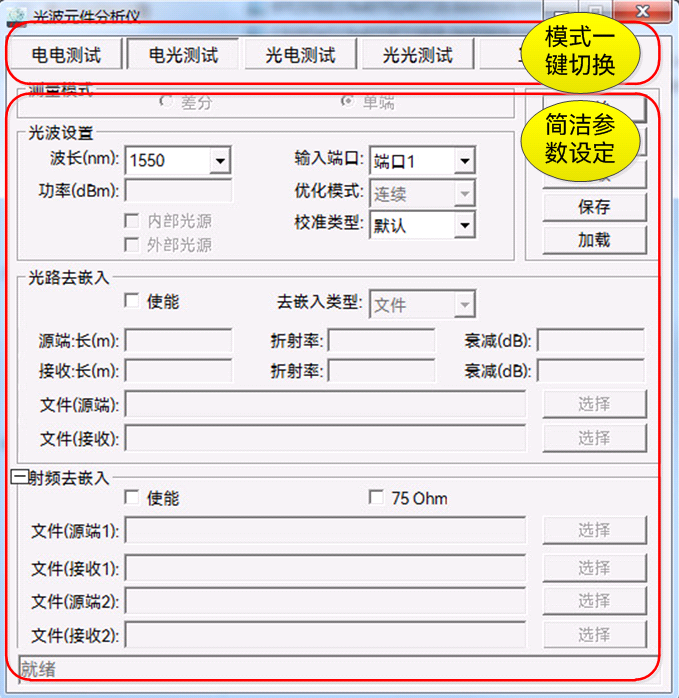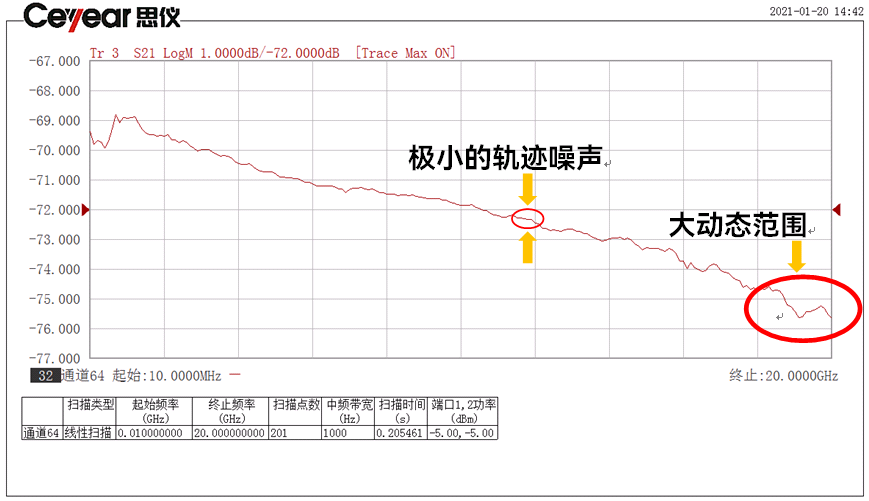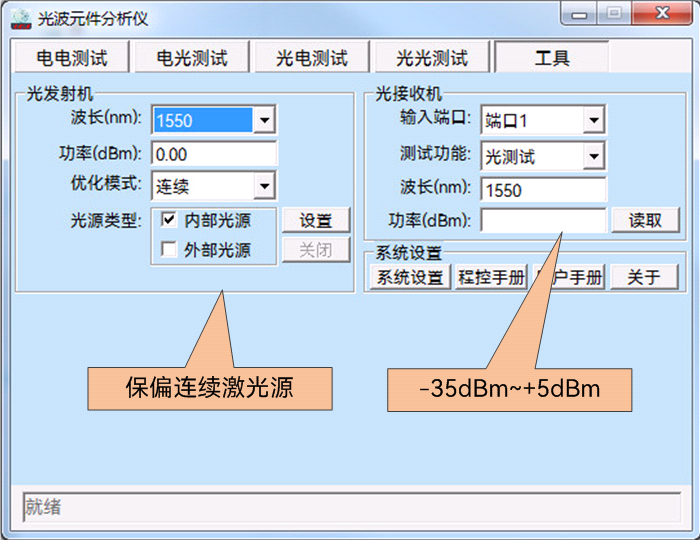 Product Overview
Product Overview
The 6433 Series Lightwave Component Analyzer includes four models:
-
6433D (10MHz – 26.5GHz)
-
6433F(10MHz – 43.5GHz)
-
6433H (10MHz – 50GHz)
-
6433L (10MHz – 67GHz)
The 6433 series analyzer is designed for testing the characteristics of high-speed electro-optic (E/O) devices, optoelectronic (O/E) devices, and all-optical (O/O) components. It supports modulation frequencies from 10MHz to 67GHz, offering flexible configuration options for frequency range, frequency spacing, and intermediate frequency (IF) bandwidth. The minimum frequency resolution reaches 1Hz, enabling precise and detailed measurements.
Adopting an integrated design approach, the 6433 Series incorporates broadband hardware optimization and establishes a network error model. Combined with advanced calibration algorithms, it enables one-button broadband fast frequency sweep testing, significantly improving measurement efficiency and accuracy.
The 6433 series analyzer is primarily used for measuring key performance parameters—such as bandwidth, amplitude-frequency response, phase-frequency response, and group delay—of core components in modern high-speed optical transmission systems, including:
-
Electro-Optic Devices: Electro-optic modulators, directly modulated lasers, optical transmitter modules
-
Optoelectronic Devices: PIN photodetectors, APD photodetectors, optical receiver modules
-
All-Optical Devices: Optical passive components such as fiber filters
With its wide frequency coverage, high precision, and multi-functional test capabilities, the 6433 series analyzer provides a powerful and reliable platform for the development and evaluation of high-speed optical communication devices.
 Key Features
Key Features
|
|
Key Features
-
Convenient and Efficient Calibration with Wizard-Guided Operation
-
Integrated Multifunctional User Interface
-
Wide Dynamic Measurement Range with Low Trace Noise
-
Automatic Fixture Removal for On-Wafer Testing Extension
-
Single-Ended to Balanced Optoelectronic Device Measurement Mode
-
Comprehensive Toolbox for Versatile Applications
-
Internal and External Wavelength Source Configuration
-
Fast Automatic Light Source Power Calibration
|
Convenient and Efficient Calibration with Wizard-Guided Workflow
The 6433 Series Lightwave Component Analyzer features a clear and streamlined calibration process, primarily including electrical calibration and optical path parameter calibration. By employing a wizard-guided interface, the instrument provides users with step-by-step instructions to achieve fast and high-precision calibration.
|
|

|
Integrated Multi-functional Operation Interface
The 6433 Series Lightwave Component Analyzer features four measurement modes — electrical-electrical (EE), electrical-optical (EO), optical-electrical (OE), and optical-optical (OO) — as well as four corresponding optoelectronic calibration modes. These functional modes can be freely switched to meet the measurement requirements of most general-purpose devices, including S-parameters, impedance, and time-domain parameters.
|
Wide Dynamic Measurement Range with Low Trace Noise
By utilizing high-precision internal components with flat response characteristics and setting different intermediate frequency (IF) bandwidth values, the analyzer achieves an extended dynamic measurement range and significantly reduced trace noise, enabling the capture of finer details in measurement results.
|

|

|
Automatic User Data Removal for Extended On-Wafer Testing
By using user-defined or fixture de-embedding data, the measurement accuracy is improved. This feature is especially useful for removing probe-related errors during on-wafer testing, making the measurement process more flexible and adaptable to various testing scenarios.
|
Single-Ended to Balanced Optoelectronic Device Mode Measurement
The instrument can be configured to meet the test requirements for differential gain and common-mode rejection ratio (CMRR) of single-ended-to-single-ended and single-ended-to-balanced optical transmit or receive devices or modules. This capability better aligns with current and future multi-port parameter measurement scenarios in the field of high-speed optical fiber communications.
|

|

|
Multi-functional Toolbox
The instrument features an integrated and functionally interconnected optical transmit and receive architecture. It includes a built-in optical power meter with a wide dynamic range, enabling real-time monitoring of input optical power for internal and external light source calibration.
With advanced configuration options, it can provide polarization-maintaining light sources required for Mach-Zehnder (M-Z) LiNiO₃ modulators.
The optical receiver module offers an absolute frequency response greater than -3 dB, ensuring accurate extraction of weak signals. Additionally, the dual-port optical receiver measurement setup provides users with a wider range of measurement flexibility and selection options.
|
Internal and External Light Source Wavelength Setting for Extended Communication Wavelength Testing
The testing is not limited to 1310nm/1550nm wavelengths. The instrument supports external light source input in the range of 1260nm to 1610nm, covering a broader communication wavelength range. This capability meets the measurement requirements of key components in CWDM and DWDM systems.
|
|
1. Electro-Optic Device Characterization
For electro-optic devices such as electro-optic modulators and directly modulated lasers, S11 and S21 parameter testing can be performed. By using multi-window comparison analysis, users can more quickly obtain the reflection and transmission characteristics of the device under test at various frequency points.

2. Frequency Response Characterization of Optoelectronic Devices
The 6433 Series analyzer enables frequency response testing of optoelectronic devices such as photodetectors across a range of 10MHz to 67GHz. Fast 3dB bandwidth analysis and precise frequency response measurements meet the testing requirements for both research and production line applications.

3. Phase-Frequency Response Characterization
The analyzer features powerful phase-frequency response measurement capabilities, enabling rapid analysis of phase and group delay parameters in optoelectronic devices.




 Product Overview
Product Overview








 +86 18988756718
+86 18988756718 WeChat
WeChat